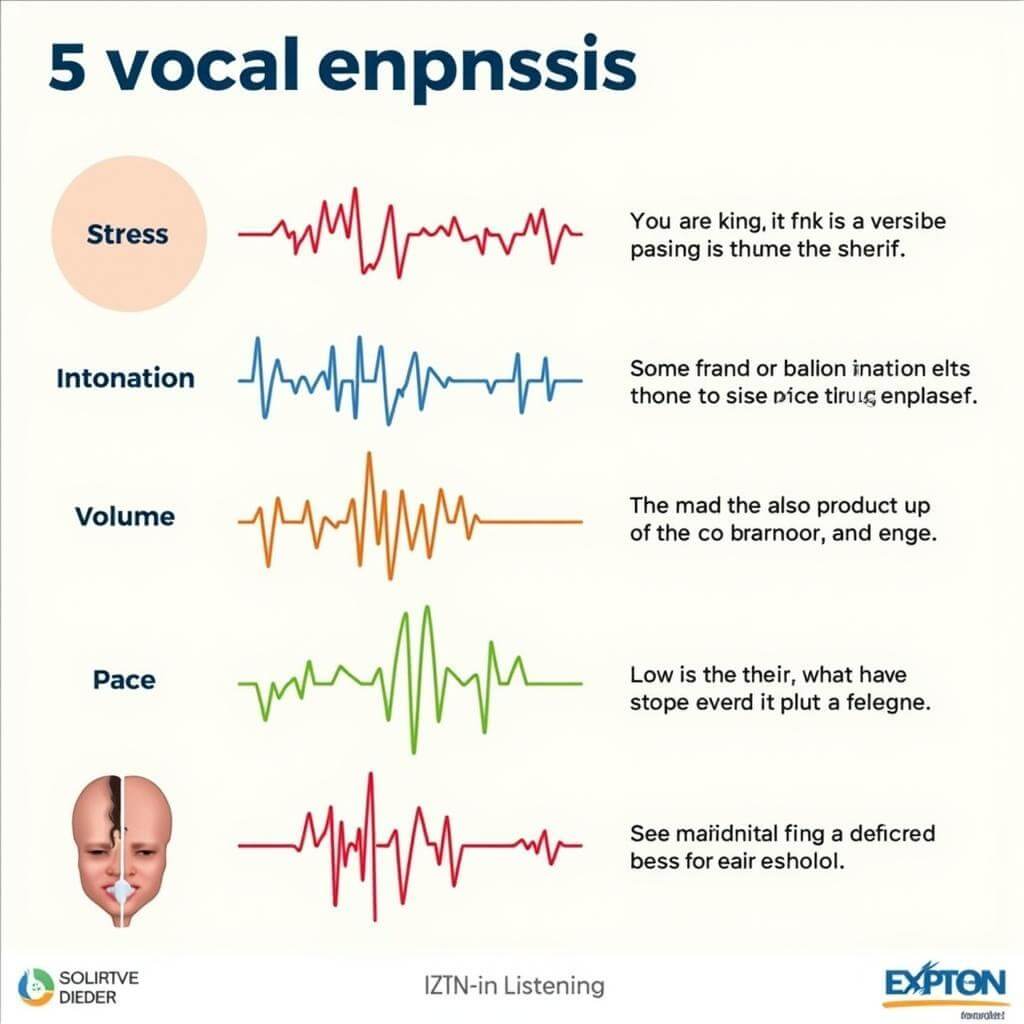In the IELTS Listening test, understanding a speaker’s emphasis is vital for accurately interpreting their message. This skill can significantly impact your performance, helping you identify key information and nuances in the audio recordings. Let’s explore how to master this essential aspect of listening comprehension.
Table Of Contents
- What is Vocal Emphasis?
- Types of Vocal Emphasis
- Examples of Vocal Emphasis in IELTS Listening
- Applying This Skill in IELTS Listening Tasks
- Multiple Choice Questions
- True/False/Not Given Questions
- Matching Information
- Gap-Fill Exercises
- Common Mistakes to Avoid
- Strategies for Improving Emphasis Recognition
- Conclusion
What is Vocal Emphasis?
Vocal emphasis refers to the way speakers stress certain words or phrases to convey importance, contrast, or emotion. In the context of IELTS Listening, recognizing these emphasis patterns can provide valuable clues about the speaker’s intended meaning and help you anticipate important information.
Types of Vocal Emphasis
- Stress: Putting more force on a particular syllable or word
- Intonation: Changes in pitch to indicate questions, statements, or emotions
- Volume: Speaking louder or softer to highlight specific points
- Pace: Slowing down or speeding up to emphasize certain parts of speech
- Pausing: Brief silences before or after important information

Examples of Vocal Emphasis in IELTS Listening
To better understand how vocal emphasis works, let’s examine some examples you might encounter in the IELTS Listening test:
- “The meeting is scheduled for Tuesday, NOT Wednesday.”
- “Is this your FIRST time visiting the museum?”
- “The results were SURPRISINGLY positive.”
- “You must submit your application BY FRIDAY at the latest.”
- “The most IMPORTANT factor to consider is cost.”
- “She’s an EXCELLENT student, but her attendance is POOR.”
- “I STRONGLY recommend reading the instructions carefully.”
- “The conference will be held in Paris… FRANCE, not Texas.”
- “You can choose either the RED or the BLUE package.”
- “The deadline is ABSOLUTELY non-negotiable.”
In each of these examples, the capitalized words represent where a speaker might place emphasis to convey crucial information or clarify potential misunderstandings.
Applying This Skill in IELTS Listening Tasks
Understanding vocal emphasis can be particularly helpful in various IELTS Listening question types:
Multiple Choice Questions
Speakers often emphasize the correct answer among several options. Pay attention to stressed words that might indicate the key information.
True/False/Not Given Questions
Emphasis can help you determine the speaker’s stance on a particular statement, making it easier to identify whether it’s true, false, or not mentioned.
Matching Information
When speakers list items or categorize information, they may use emphasis to clearly delineate between different points, aiding in matching tasks.
Gap-Fill Exercises
Emphasized words are often the ones you need to write down in gap-fill questions. Speakers may stress key terms, numbers, or names that you’re required to identify.
Common Mistakes to Avoid
When focusing on vocal emphasis, be careful not to:
- Overrely on emphasized words: Sometimes important information isn’t stressed.
- Ignore context: Emphasis alone doesn’t always indicate the correct answer.
- Miss subtle emphasis: Not all emphasis is dramatic; some can be quite subtle.
- Confuse emphasis with repetition: Repeated information isn’t always the most important.
- Neglect other listening skills: Emphasis is just one aspect of effective listening.
Strategies for Improving Emphasis Recognition
To enhance your ability to recognize and utilize vocal emphasis in IELTS Listening:
- Practice active listening with various English accents and speaking styles.
- Watch English news broadcasts and documentaries, noting how presenters emphasize key points.
- Listen to podcasts on diverse topics, focusing on how speakers use emphasis to convey their message.
- Record yourself reading aloud and experiment with different emphasis patterns.
- Engage in conversations with native English speakers, observing their natural emphasis patterns.
- Use IELTS practice tests to familiarize yourself with the types of emphasis used in the exam.
- Transcribe short audio clips, marking where you hear emphasis, then check your accuracy.
Conclusion
Recognizing emphasis in a speaker’s voice is a crucial skill for success in the IELTS Listening test. By understanding the various types of vocal emphasis and practicing their identification, you can significantly improve your ability to extract key information from audio recordings. Remember, this skill not only enhances your IELTS performance but also contributes to better overall English comprehension in real-life situations. Keep practicing, stay attentive to the nuances of spoken English, and you’ll find yourself better equipped to tackle the challenges of the IELTS Listening test with confidence.